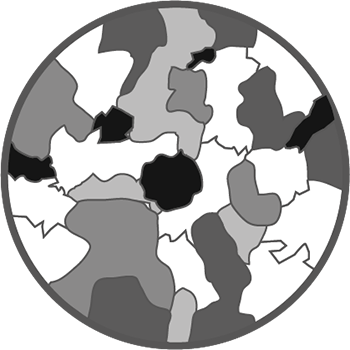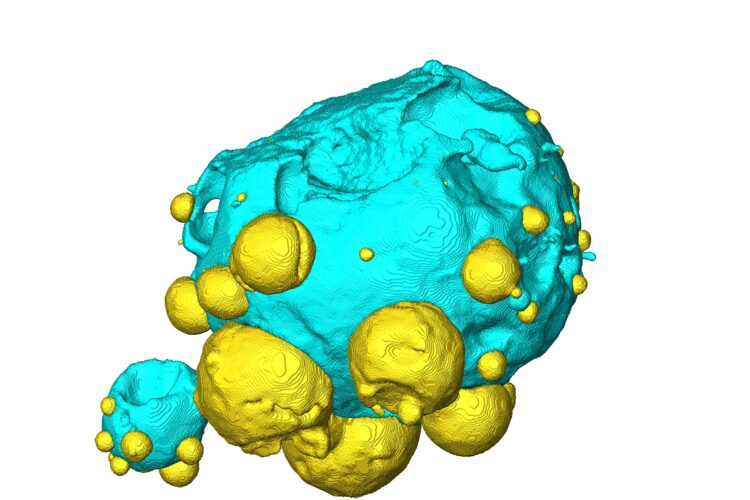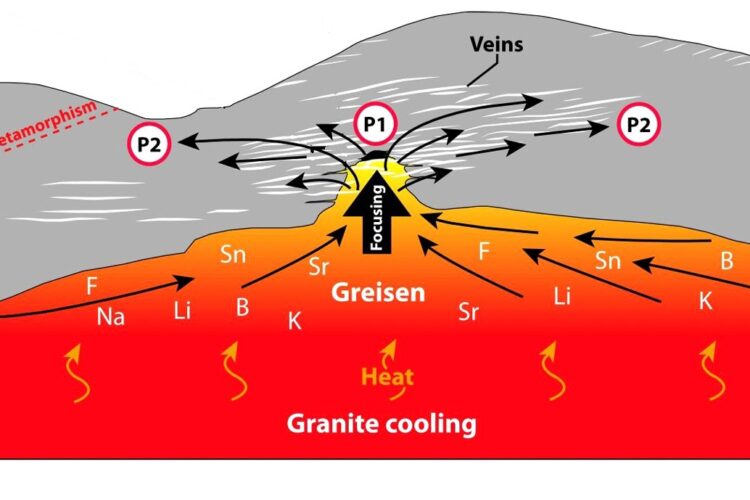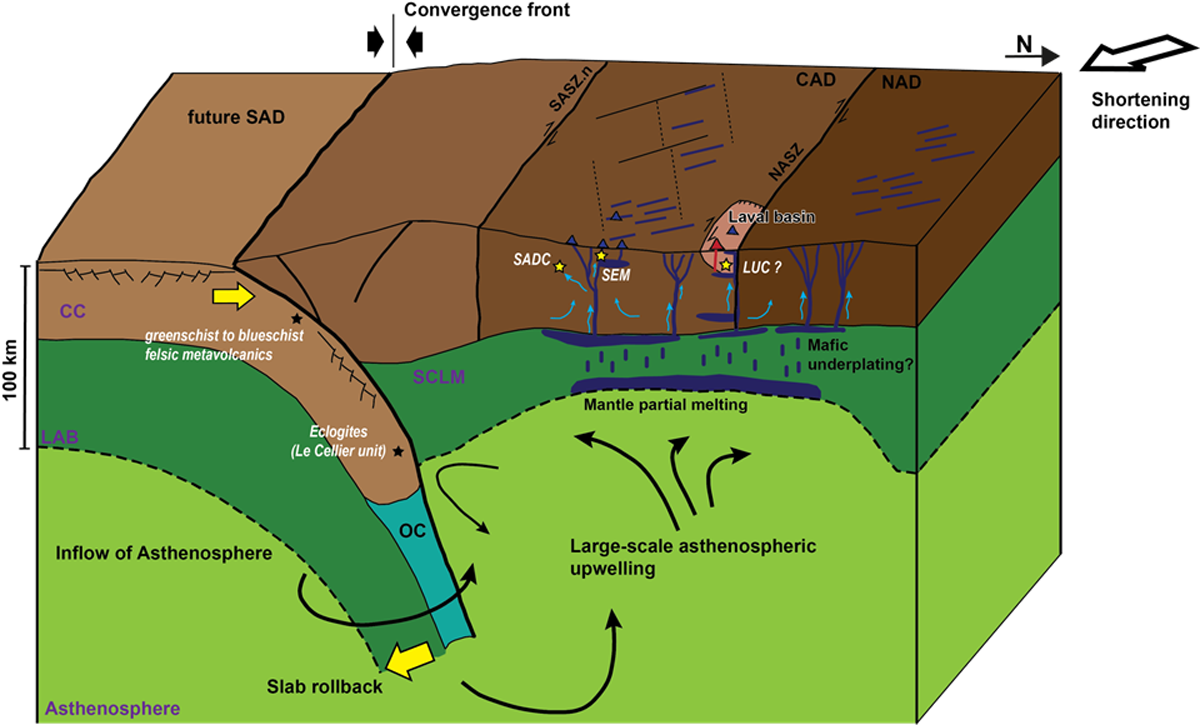Read more >
ISTO, UMR 7327,
Univ Orléans, CNRS, BRGM, OSUC, F-45071 Orléans, France
ISTO, UMR 7327,
Univ Orléans, CNRS, BRGM, OSUC, F-45071 Orléans, France

Our objectives are: (1) to describe mineral deposits and systems, (2) characterise their geological environments, (3) to understand and model key processes for metallic concentrations at all scales.
Our actions are derived into three axes:



12 Permanents
4 Postdocs/ATER
5 PhD candidates
Observation
Experimentation
Modelling
4 ANR
1 European Project
Team head: Iacono Marziano Giada and Jeremie Melleton
Permanent.e.s:
Matthieu Harlaux (Ch – BRGM)
Romain Augier (MCF – UO)
Remi Coltat (MCF – UO)
Yan Chen (Pr – UO)
Michel Faure (Pr E – UO)
Giada Iacono Marziano (CR – CNRS)
Fabrice Gaillard (DR – CNRS)
Laurent Guillou-Frottier (Ch – BRGM)
Charles Gumiaux (MCF – UO)
Arnault Lassin (Ch – BRGM)
Gautier Laurent (MCF – UO)
Marion Louvel (CR – CNRS)
Jeremie Melleton (Ch – BRGM)
Alexis Plunder (Ch – BRGM)
Anthony Pochon (Ch – BRGM)
Florian Osselin (Vema Hydrogen)
Pierre-Alexandre Reninger (Ch – BRGM)
Stanislas Sizaret (PU – UO)
Hugues Thouin (Ch – BRGM)
Alex Vella (Ch – BRGM)
Postdocs et ATER:
Hèctor R. Campos Rodriguez (ATER – UO)
Julien Fort (Vema Hydrogen)
Cordula Haupt (Ch – CNRS)
Ville Virtanen (Ch – CNRS)
Doctorant·e·s:
Coefficients de partage et solubilité des espèces dans les fluides.
Granites et pegmatites à métaux rares (comportement du Li).
Liquide sulfuré et conditions de formation des gisements de sulfures magmatiques
Gisements REE associés aux carbonatites
Transition magmatique-hydrothermale
 Faure Michel11
Faure Michel11 Gumiaux Charles8
Gumiaux Charles8 Gloaguen Eric6
Gloaguen Eric6 Iacono-Marziano Giada6
Iacono-Marziano Giada6 Pochon Anthony4
Pochon Anthony4 Chen Yan4
Chen Yan4 Poujol Marc4
Poujol Marc4 Melleton Jérémie4
Melleton Jérémie4 Branquet Yannick4
Branquet Yannick4 Louvel Marion4
Louvel Marion4 Guillou-Frottier Laurent4
Guillou-Frottier Laurent4 Laurent Gautier4
Laurent Gautier4 Meng Lingtong3
Meng Lingtong3 Arbaret Laurent3
Arbaret Laurent3 Testemale Denis3
Testemale Denis3 Tuduri Johann3
Tuduri Johann3 Jolivet Laurent3
Jolivet Laurent3 Chu Yang2
Chu Yang2 Kontak Daniel J.2
Kontak Daniel J.2 Liu Fei2
Liu Fei2 Liu Hongsheng2
Liu Hongsheng2 Ni Xinghua2
Ni Xinghua2 Patten C.G.C.2
Patten C.G.C.2 Villaros Arnaud2
Villaros Arnaud2 Virtanen Ville J.2
Virtanen Ville J.2 Wang Yin2
Wang Yin2 Wei Wei2
Wei Wei2 Wilke Max2
Wilke Max2 Wu Qinying2
Wu Qinying2 Lin Wei2
Lin Wei2 Pichavant Michel2
Pichavant Michel2 Blaise Thomas2
Blaise Thomas2 Mollé Valentin2
Mollé Valentin2 Missenard Yves2
Missenard Yves2 Bruguier Olivier2
Bruguier Olivier2 Bellahsen Nicolas2
Bellahsen Nicolas2 Loget Nicolas2
Loget Nicolas2 Cluzel Dominique2
Cluzel Dominique2 Haurine Frédéric2
Haurine Frédéric2 Chatelin Tom2
Chatelin Tom2 Callot Jean-Paul2
Callot Jean-Paul2 Allanic Cécile2
Allanic Cécile2 Duwiquet Hugo2
Duwiquet Hugo2 Le Bayon Benjamin2
Le Bayon Benjamin2 Slodczyk Aneta2
Slodczyk Aneta2 Wang Bo2
Wang Bo2 Augier Romain2
Augier Romain2 Faure Agathe2
Faure Agathe2 Cagnard Florence2
Cagnard Florence2 Abu Anbar Mohamed1
Abu Anbar Mohamed1 Al Abed Rami1
Al Abed Rami1 Appel Erwin1
Appel Erwin1 Bai Y1
Bai Y1 Ballouard Christophe1
Ballouard Christophe1 Barnes S J1
Barnes S J1 Barré Guillaume1
Barré Guillaume1 Bazarkina Elena F.1
Bazarkina Elena F.1 Beck Kévin1
Beck Kévin1 Berndt Jasper1
Berndt Jasper1 Borchert Manuela1
Borchert Manuela1 Boudzoumou Florent1
Boudzoumou Florent1 Boukhalfa Chahrazed1
Boukhalfa Chahrazed1 Bounab Nourhane1
Bounab Nourhane1 Brooker Richard1
Brooker Richard1 Bédard Jean1
Bédard Jean1 Cadoux Anita1
Cadoux Anita1 Campos-Rodriguez Hector R.1
Campos-Rodriguez Hector R.1 Cao Tingting1
Cao Tingting1 Carr Patrick1
Carr Patrick1 Carvalho Ana1
Carvalho Ana1 Charlier B1
Charlier B1 Chatelin Tom1
Chatelin Tom1 Chen Yiyi1
Chen Yiyi1 Chistyakova Syu1
Chistyakova Syu1 Cornelissen Annemiek Johanna Maria1
Cornelissen Annemiek Johanna Maria1 Del-Net William1
Del-Net William1 Deparis Jacques1
Deparis Jacques1 Dibousse Aboubacar1
Dibousse Aboubacar1 Djama Louis-Marie1
Djama Louis-Marie1 Donzé Frédéric Victor1
Donzé Frédéric Victor1 Douady Stéphane1
Douady Stéphane1 Duclaux Laurent1
Duclaux Laurent1 Ebel Denton1
Ebel Denton1 Escartín J.1
Escartín J.1 Fabbri Olivier1
Fabbri Olivier1 Ferrière Jacky1
Ferrière Jacky1 Fournier-Roy François1
Fournier-Roy François1 Galvez Matthieu E.1
Galvez Matthieu E.1 Gapais Denis1
Gapais Denis1 Garrido C.J.1
Garrido C.J.1 Godet Antoine1
Godet Antoine1 Guilmette Carl1
Guilmette Carl1 Guiomar Myette1
Guiomar Myette1 Gumiaux Charles1
Gumiaux Charles1 Guo Zhao1
Guo Zhao1 Hammond Keiji1
Hammond Keiji1 Hector R. Campos Rodriguez1
Hector R. Campos Rodriguez1 Heinonen Jussi S.1
Heinonen Jussi S.1 Hochscheid F.1
Hochscheid F.1 Holness M B1
Holness M B1